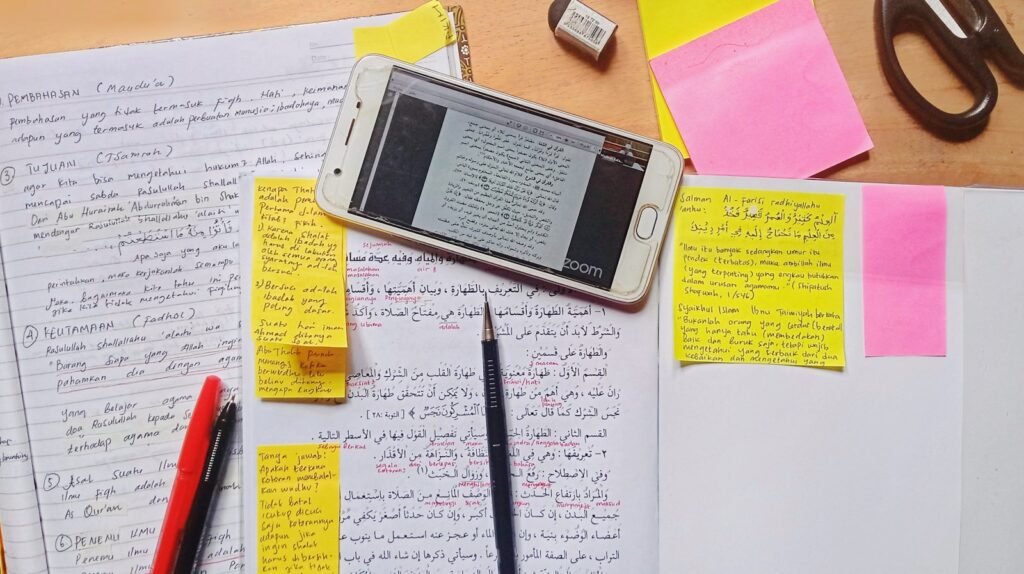
Understanding the Basics of Academic Formatting
Welcome, dear readers, to the intriguing realm of academic formatting! Imagine this: you’ve poured countless hours into researching, drafting, and refining your essay, only to see your hard work overshadowed by subpar formatting. In the words of the legendary Winston Churchill, “We shape our buildings; thereafter they shape us.” Just as the design of a building influences its inhabitants, so too does the structure of your academic writing either elevate or diminish your message.
Now, let’s delve into the concept of consistency, my esteemed companions. It’s akin to blending ingredients in a recipe you wouldn’t toss in chocolate for one batch of cookies and then switch to raisins for another. Maintain a cohesive formatting style throughout your entire document. As the incomparable Maya Angelou once wisely stated, “You can’t use up creativity. The more you use it, the more you have.” Therefore, unleash your creativity within your content while adhering to a structured format that effectively showcases your brilliance.
The Importance of Consistency in Formatting Styles
Imagine a whimsical world where formatting styles dance around like confetti at a party – delightful, yet dangerous in the realm of academic writing. Picture this: you’re engrossed in a scholarly paper when out of nowhere, the font morphs from Times New Roman to Comic Sans. It’s akin to watching a monochrome film suddenly burst into vibrant Technicolor – disorienting and migraine-inducing. Consistency is not just important; it’s essential, my dear companions, like a symphony harmoniously playing one unified note. As the sagacious Mark Twain once mused, “The only way to maintain your well-being is by consuming what you dislike, imbibing what repulses you, and engaging in activities that make you cringe.” Perhaps he wasn’t referring to formatting guidelines specifically, but his words do hold true regarding the importance of consistency.
Envision a scenario where every publication adopts its own peculiar method for citing sources – utter pandemonium! This emphasizes why adhering to a specific formatting style for in-text citations is paramount. It resembles following an intricate recipe – an excess of salt can mar the dish just as inconsistent citation practices can tarnish your paper’s credibility. And let us not overlook the chaos caused by jumbled bibliographies and works cited pages – akin to presenting oneself with mismatched socks at an important job interview; seemingly trivial yet leaving an indelible mark nonetheless. In the immortal words of Maya Angelou, “I’ve learned that people may forget your words or deeds but they will never forget how you made them feel.” Therefore, let us endeavor to instill confidence in our readers through upholding consistency in our chosen formatting styles!
In-Text Citations: How to Properly Attribute Sources
Oh, the mysterious world of in-text citations – those silent champions of scholarly writing, quietly acknowledging the work of others without stealing the spotlight. It’s not just a recommendation, it’s an essential element of academic etiquette. As Jane Austen so eloquently put it, “It is a truth universally acknowledged, that a writer armed with solid research must acknowledge its origins.” Embrace your inner Austen and scatter those citations throughout your paper like confetti at a celebration – generously and skillfully.
Now, let’s delve into the art of seamlessly incorporating your in-text citations into your prose. Imagine this: you’re constructing a meticulously crafted sentence when suddenly you need to reference Einstein’s brilliant insights or Watson and Crick’s groundbreaking discoveries. Fear not! Blend these citations into your text like a seasoned chef adding just the right amount of seasoning to a dish. Remember Mark Twain’s wise words: “The difference between the right word and the almost right word is like lightning and lightning bug.” So choose your citations thoughtfully, as they have the power to transform your writing from ordinary to extraordinary.
Creating a Bibliography/Works Cited Page
Ah, the dreaded Bibliography/Works Cited Page – a source of torment for every student! But fret not, my fellow writers, for I am here to lead you through this confusing maze with insight and knowledge.
When constructing your Bibliography/Works Cited Page, keep in mind the crucial rule: cite your sources as if your GPA hinges on it – which it most likely does! As the wise Oscar Wilde once quipped, “I love deadlines. I love the whooshing noise they make as they go by.” So, do not let your references zoom past you unnoticed – acknowledge where acknowledgment is due!
Now, onto the intricate details of crafting a flawless Bibliography/Works Cited Page. Remember, consistency is paramount! In the words of the illustrious Maya Angelou, “There is no greater agony than bearing an untold story inside you.” Allow your sources to narrate their tale in a coherent and uniform manner so that readers can easily trace back the path of your intellectual voyage.
Formatting Guidelines for Title Pages
Oh, the enigmatic title page – the facade of your cherished essay, the entrance to your scholarly opus. This seemingly unassuming page holds more influence than meets the eye. It’s akin to a tantalizing appetizer before a grand feast – it establishes the ambiance for what lies ahead and offers a glimpse into the savory banquet of knowledge you are poised to present to your audience.
When crafting your title page, bear in mind to maintain an air of sophistication and tidiness. As Oscar Wilde famously remarked, “You can never be overdressed or overeducated.” So why not adorn your title page with the regal attire it warrants? Align your title, name, course details, date, and any pertinent information meticulously on the page. Opt for a font that exudes refinement like Times New Roman or Garamond – steer clear of Comic Sans unless aiming for a whimsical touch (though let’s be honest, academic papers are no comedy club acts).
Here’s a clandestine tip – remember that your title page is your initial impression; hence make it unforgettable! Echoing Maya Angelou’s profound words: “I’ve learned that people will forget what you said…but people will never forget how you made them feel.” Thus strive to render your title page remarkable not through ostentatious hues or ornate graphics but by infusing it with elegance and professionalism. Ultimately, a well-crafted title page is akin to a firm handshake – signaling intent and readiness to navigate academia adeptly one impeccably structured essay at a time.
Mastering the Art of Parenthetical Citations
Ah, the mysterious world of parenthetical citations, often overshadowed yet undeniably essential in the realm of academic writing. These unassuming tools play a vital role in acknowledging the sources that contribute to our scholarly endeavors. In the words of the esteemed Mark Twain, “I can live for two months on a good compliment.” Indeed, citations serve as compliments to our sources they keep them satisfied and shield us from plagiarism accusations. Let us unravel the enigma surrounding these discreet parentheses that lend an air of erudition to our written work.
Imagine this: you are navigating through your essay with confidence, imparting pearls of wisdom effortlessly when suddenly, you encounter the need to cite a source. Instead of succumbing to panic and anxiety, simply insert that citation within those unassuming parentheses. It is akin to seasoning your academic creation it enhances its flavor and ensures your readers are informed about the origins of each nugget of knowledge. As Maya Angelou astutely remarked, “Do the best you can until you know better. Then when you know better, do better.” Let us elevate our parenthetical citations by adhering to guidelines and crediting sources like true scholarly luminaries we aspire to be.
The Role of Footnotes and Endnotes in Academic Writing
If footnotes and endnotes were to form a superhero alliance, they would undoubtedly be the formidable duo of academic writing. They come swooping in like caped crusaders, rescuing your paper from the clutches of cluttered paragraphs and citation chaos. These seemingly inconspicuous numbers lurking at the bottom of your page hold more power than meets the eye! They play the role of trusty sidekicks to your main text, offering supplementary tidbits of information without stealing the spotlight. As Ernest Hemingway sagely remarked, “When writing is stellar, footnotes are superfluous; when it falters, they become indispensable.” Let’s shower these unsung champions with the recognition they so rightly deserve.
Picture yourself amidst an elegant soirée, engaged in spirited banter with fellow academics and intellectuals. Suddenly struck by a brilliant insight or fascinating factoid that you must share but hesitant to disrupt the conversational flow fear not! Enter footnotes and endnotes, providing a sanctuary for your asides, elaborations, or quirky tales while maintaining harmony within the primary discourse. In accordance with Mark Twain’s astute observation: “An overabundance of footnotes betrays an uneasy scholar.” Exercise caution in their deployment; use them judiciously to enrich your prose subtly and allow these modest aides to enhance rather than overwhelm your writing.
Tips for Formatting Tables, Figures, and Charts
Oh, the thrill of arranging tables, figures, and charts – those underrated champions of academic writings. These visual treasures not only bring a touch of aesthetic charm but also assist in presenting intricate data in a comprehensible manner. As the brilliant mind of Isaac Newton once pondered, “I can predict the movement of celestial bodies, but I cannot fathom the chaos caused by individuals haphazardly formatting tables.” So, let us delve into the skill of communicating information in a manner that would astonish even Galileo.
When tackling tables, keep in mind that simplicity is key. Avoid overcrowding with numbers like a packed subway during peak hours; instead, opt for clarity and conciseness. In the wise words of Mark Twain, “Why use an extravagant word when a simple one will suffice?” Similarly, when creating charts and figures, ensure they are coherent and complement the narrative of your paper. Consider them as supporting actors in a blockbuster film – their role is to enhance the plotline rather than steal the spotlight. Remember what Leonardo da Vinci said: “Simplicity is ultimate sophistication.”
In the realm of academic writing, formatting tables, figures,and charts may appear to be minor details; yet as Aristotle reflected,”The whole is greater than sum its parts.” Each element,no matter how small plays part holistic experience reading understanding scholarly work.So let embrace intricacies formatting precise artistic flair because academia every comma,line,pixel carries weight knowledge meaning.n
Avoiding Plagiarism through Proper Citation
Plagiarism – that forbidden fruit of academia. Picture the sheer horror on your professor’s face as they uncover your blatant act of copy-pasting in that meticulously crafted research paper. It’s not just a slap in the face, it’s a slap with an “F” branded on it for all eternity. So how do we navigate this treacherous territory like a modern-day Neo from “The Matrix”? The answer lies in proper citations, my dear Watson. As the great bard Shakespeare once pondered, “To cite or not to cite? That is the question.” Well, maybe not exactly those words, but you catch my drift.
Imagine pouring your heart and soul into writing that flawless essay, only to have it dismissed as a plagiarism-infested disaster. It’s akin to slaving away in the kitchen for hours preparing a gourmet feast, only to be accused of serving up cheap imitations. So let us sprinkle some citation fairy dust onto our masterpiece. Remember Mark Twain’s wise words: “The difference between the almost right word and the right word is … the difference between the lightning bug and the lightning.” In academia, citations are our guiding light – they illuminate our sources and shield us from descending into academic dishonesty’s murky depths. So grab hold of your trusty citation style guide and together we shall waltz towards scholarly redemption.


